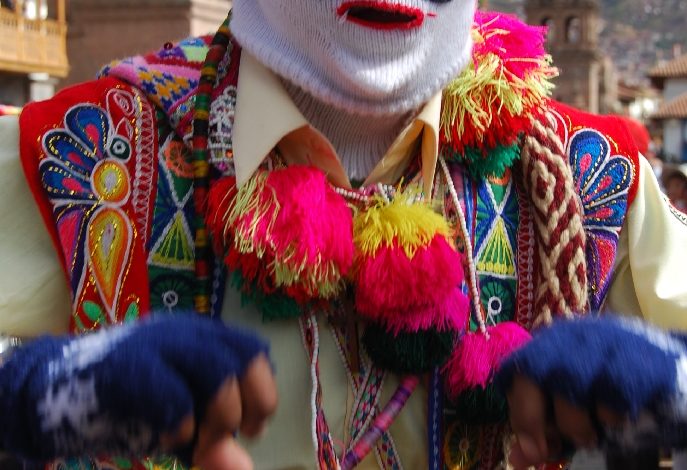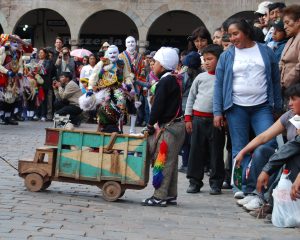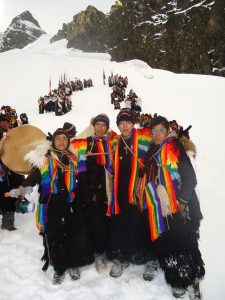Soldiers of the Old God Yaya, the Pablitos of Cuzco

With the feast of Corpus Christi, another real challenge of faith begins. While most Cusqueños are drawn up into the processions and activities in its many chapels composing this feast, many others travel to Ocongate district by the high, snow clad mountain Ausangate, where the Lord of Qoyllur Riti is found. They go there to make all their pleas, both prayers and desires, known to this Mountain Lord. People say that if they go three times consecutively one of their petitions will be fulfilled.
A portion of the masses of people who go are the Pablitos. They are called the Lord of Qoyllur Riti’s Soldiers. Unlike the civilians who go, these men have the mission of protecting and taking care of the Sanctuary so that this traditional pilgrimage can continue for many more years.
The Pablitos are organized into eight nations from Cuzco’s different provinces. One of them is the Nation of Tawantinsuyo, which is organized in the city of Cuzco. In turn, this nation is organized into many troupes (comparsas). Each troupe has to organize a series of choreographies and also count on the support of jurqados, people who are named to sponsor the event as padrinos, as if the troupe where a child and they its godparent. They support by providing a car or truck in which the Pablitos can travel to the Sanctuary. The troupes also require Mama Huaylas to take charge of preparing their food during the pilgrimage.
Edson Rios Huaman, a young pilgrim spoke with us about his path of faith. He said his parents would take him on the pilgrimage when he was young. When he was older he continued to go on his own, as a civilian, for three years.

Then he was motivated to belong to the troupe Centro Cultural Villa Colorado that form the Tawantinsuyo Nation. He said that his first trip as a Pablito was very interesting. It was different than going as a civilian. He suddenly realized the obligations and responsibilities of the Pablitos.

The Pablitos depart from the Church of San Pedro, Rios reports. That is the place where all the troupes gather. From the Church they take trucks to Ocongate. Before they can start their journey upward on foot, two Pablitos from each troupe have to go first to Qoyllur Riti to hear the 6 am mass.
When the troupe does arrive at the Sanctuary it begins dancing, announcing in this way its arrival. They go to receive the first rays of sunlight on the top of this snow clad mountain.
Rios tells they also take time to “baptize” those who have only recently joined the Pablitos. The new members take off the costume that protects them from the cold and place their hands on the ice. The caporal, who is the head of the troupe, the person responsible for directing them, whips them with a San Martin whip consisting of nine smaller whips. It is called wichi.
The Pablitos have the responsibility of maintaining the sanctuary, in the double sense of keeping it clean as well as making sure no one damages the shrine.

It is said that on each pilgrimage one Pablito will die. Sometimes it is because of old age, they get sick on the path, or they fall into the cracks in the ice during the pilgrimage. Nevertheless, each troupe returns to Cuzco with joy. They dance around the Plaza de Armas, the Main Square, filled with joy.
The Pablitos really are soldiers who undertake the pilgrimage each year. They also recruit more pilgrims to take care of the sanctuary. Without having fear of a possible death and confronting the harsh, highland cold they maintain their tradition and customs. They will continue to carry out this task until their death, as the Pablitos continue from generation to generation.





